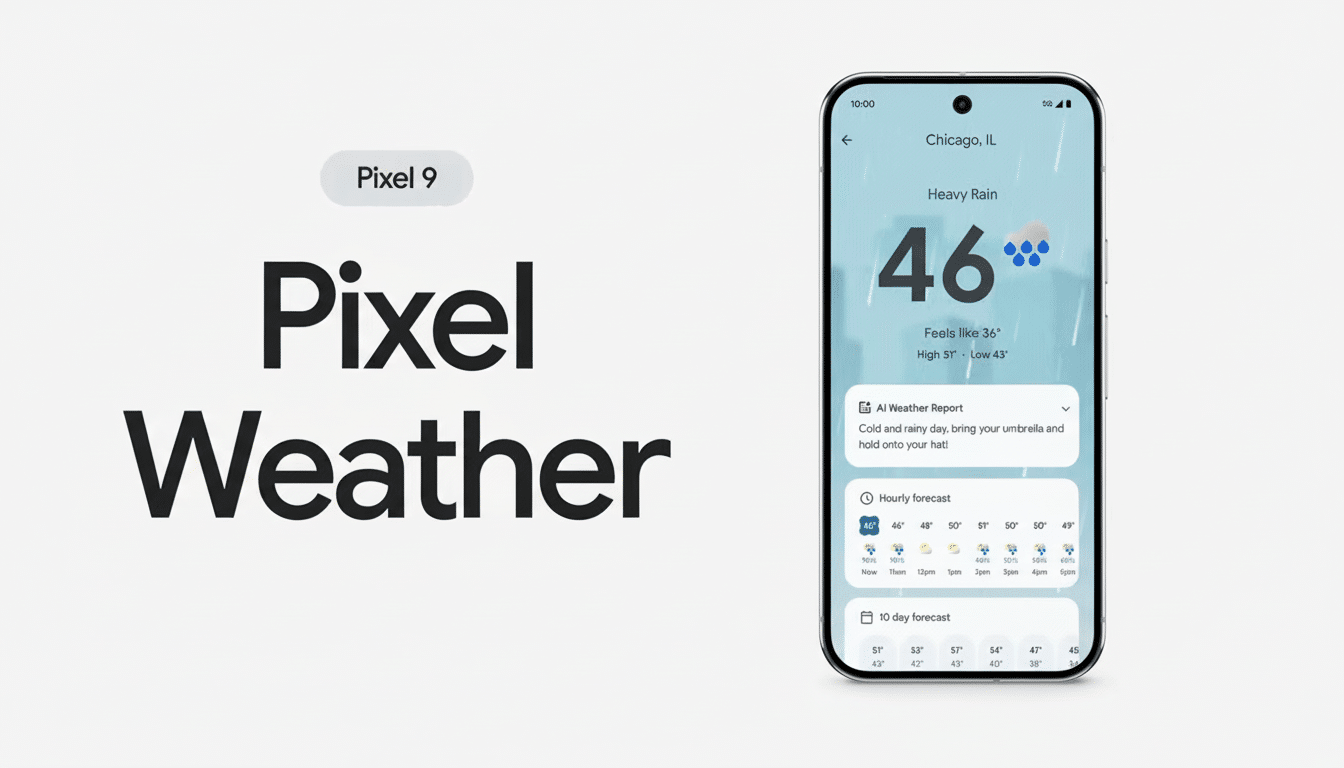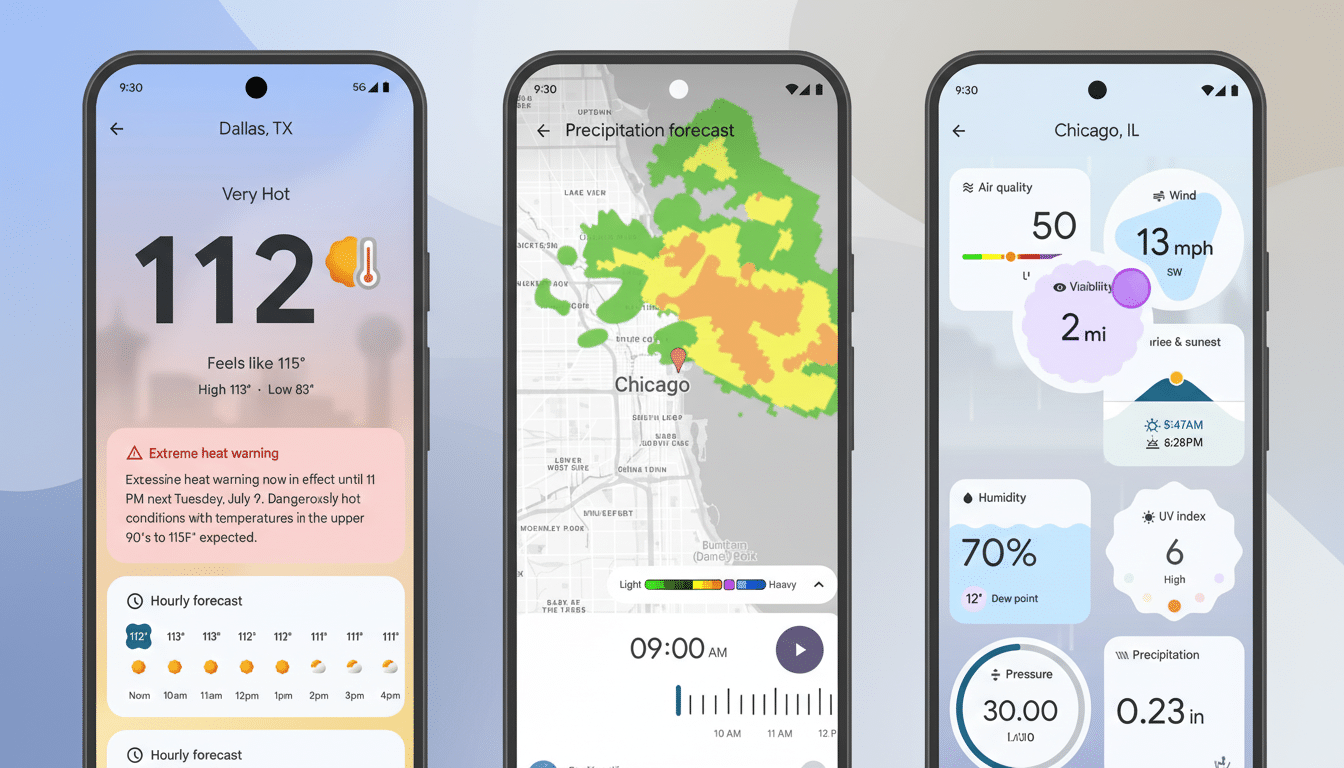Google is overhauling Pixel Weather and Google Maps in a big way thanks to WeatherNext 2, a new model powered by AI that promises faster and more accurate forecast predictions. The company says the system improves accuracy on every measure, and adds hour-level detail to forecasts you see on your phone and while driving.
What Is Different With WeatherNext 2’s Forecast Model
At the heart of WeatherNext 2 is the technology that makes it possible to develop forecasts eight times faster than its predecessor while retaining hourly resolution between now and out to 15 days. Google says that it beats the previous model on 99.9 percent of observed weather variables, including things like temperature and humidity as well as wind and when precipitation arrives.

That speed is the result of a probabilistic approach: The model runs hundreds of simulations, generating possible weather outcomes that are combined in a sharper picture of what’s probably most likely. Instead of multi-hour supercomputer runs, WeatherNext 2 can generate these scenarios on a single TPU in less than a minute, allowing for more frequent refreshes.
This ensemble-style method isn’t only about averages; it’s meant to be more sensitive at higher moments — better capturing the tails of the distribution, where extreme events reside. That could lead to swifter, more confident signals around fast-developing storms, tropical systems or new wind shifts.
Why Pixel Weather and Maps Get Better With WeatherNext 2
For owners of Pixels, hour-level resolution should enhance the practicality of such details: when rain is set to begin and end, how temperatures fluctuate over the course of a day, and how wind picks up as afternoons progress. Get tighter gradients in microclimates, great for coastal cities, mountain valleys, or lake-effect places where traditional models can smear out local detail.
The richer forecasts mean that in Google Maps, you could see more timely weather layers and alerts along a drive, run, or bike ride on a map. Should a downpour be forming 30 miles ahead, or should crosswinds strengthen on a bridge, more frequent model updates could fuel earlier nudges to change timing or select the safer path. Google hasn’t shared any information about what the UI changes will look like; however, the data pipeline underpinning it has been designed to enable those types of experiences.
How It Fits Into Traditional Forecasting
Traditional forecast centers like ECMWF and the National Oceanic and Atmospheric Administration’s National Weather Service operate physics-based models that more or less directly solve the equations of atmospheric motion over a global grid. These runs are very potent but computationally intensive, usually refreshing every 6 to 12 hours in major centers with occasional hourly updates.
AI systems, like WeatherNext 2, teach the values directly from decades of reanalysis and observations, providing skill for a fraction of the compute cost. That speed allows for fast updates and probabilistic outputs well suited for consumer apps. The best results generally come from combining approaches — deploying AI for quick and granular now-to-midrange insight while tethering to trusted physics guidance for broader context.

Recent work in the field has demonstrated that AI models are capable of matching or surpassing legacy guidance on relevant metrics for short-to-medium range forecasts, with updates available much more frequently. WeatherNext 2 also continues on that path, with Google emphasizing faster refreshes and better detection of extreme events.
Accuracy Gains and Real-World Impact From WeatherNext 2
According to Google, WeatherNext 2 is a 575% improvement on 99.9% (illustrated by Figure 5) of its metrics compared with the WeatherNext version across different forecast lead times in the range of 0–15 days. In practice, this should cut misses on pop-up storms, tighten swings in hourly precipitation probabilities, and better wind and temperature gradients that matter for everything from air quality to wildfire risk to heat management.
Think of a morning commute in summer thunderstorms: An eight-times speed boost allows the forecast to slurp down the latest radar and satellite cues, tweak that odds-of-rain-for-the-hour calculation, raise alerts before the sky goes dark. Coaches and planners of outdoor events could use clearer guidance on when a 40 percent chance becomes 70 percent — and when to move people indoors.
There are limitations to the new model, as with any. Guidance can still have difficulty in the presence of local terrain effects, limited observations, and infrequent extremes. That’s why it will continue to be important to modify the output from NLP AI forecasts with official warnings from national meteorological agencies — at least for extremes.
Where You’ll See It and What’s Next for Google Apps
WeatherNext 2 is also coming to Pixel Weather, Google Maps, Google Search, and Gemini. Google has not specified timelines or what features will be rolled out where, but the upgrade is server-side, so improvements should begin appearing without app updates as deployment gets underway.
The broader implication is obvious: faster, probabilistic AI forecasts are migrating from research labs to everyday tools. If, however, Google’s pace is half as fast and its accuracy twice that advertised, Pixel Weather could be the service that makes Google Maps’ guidance even quicker to act on — just where and when it counts.

